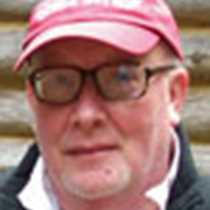Astoria, Oregon
“Ocian in View! O! the joy. Great joy in camp we are in view of the Ocian, this great Pacific Ocian which we have been so long anxious to see.” (William Clark) We arrived early in Astoria and as the water was calm, we sailed out to the Columbia River Bar and the “raging, for I cannot say pacific Ocian.” (William Clark) We turned the National Geographic Sea Bird around and headed back for our mooring at Tongue Point, so named by Captain John Mears in 1788, and used by Lewis and Clark as a base camp in Nov. 27th, 1805.
After awakening in the Columbia River estuary, we viewed large ships crossing the bar, fishing vessels heading out to the ocean, and brown pelicans feasting on their morning fish amid the harassment of gulls. Our days adventures would take us in several directions: first Fort Clatsop, winter quarters for the Corps of Discovery during the cold and miserable winter of 1805/06, the amazing Maritime Museum which is classified as one of the world’s top ten maritime museums, and Cape Disappointment, named by John Mears and explored by Captains Lewis and Clark. Many chose Zodiac and kayak adventures, while others enjoyed the small, sleepy town of Astoria and the historic Astoria Column.
At Fort Clatsop we saw the second replica of the Corps’ winter quarters, the fresh water stream that they drew their drinking water from, canoe landing, and the boardwalk along the Netual or Lewis and Clark River, and the immense forest that now surrounds the park. The history of the Maritime Museum goes back to 1792 when Robert Grey discovered the mouth of the Columbia River and includes the 2,001 shipwrecks at the Columbia River Bar, the history of the coast guard and lighthouses, the canneries, the Finns and Swedes, and much, much more.
During the afternoon motorcoach to Cape Disappointment (named by John Mears in 1788 as he was “disappointed” in not finding the mouth of the Columbia River, when in reality he had!) we followed in the footsteps of Captain Clark as he explored the estuary of the Columbia on his two-day adventure to Cape D and north along the coast about five miles.
After a wonderful day of exploring, we returned to the National Geographic Sea Bird for our own captain’s dinner and a fond farewell to all our new friends.




